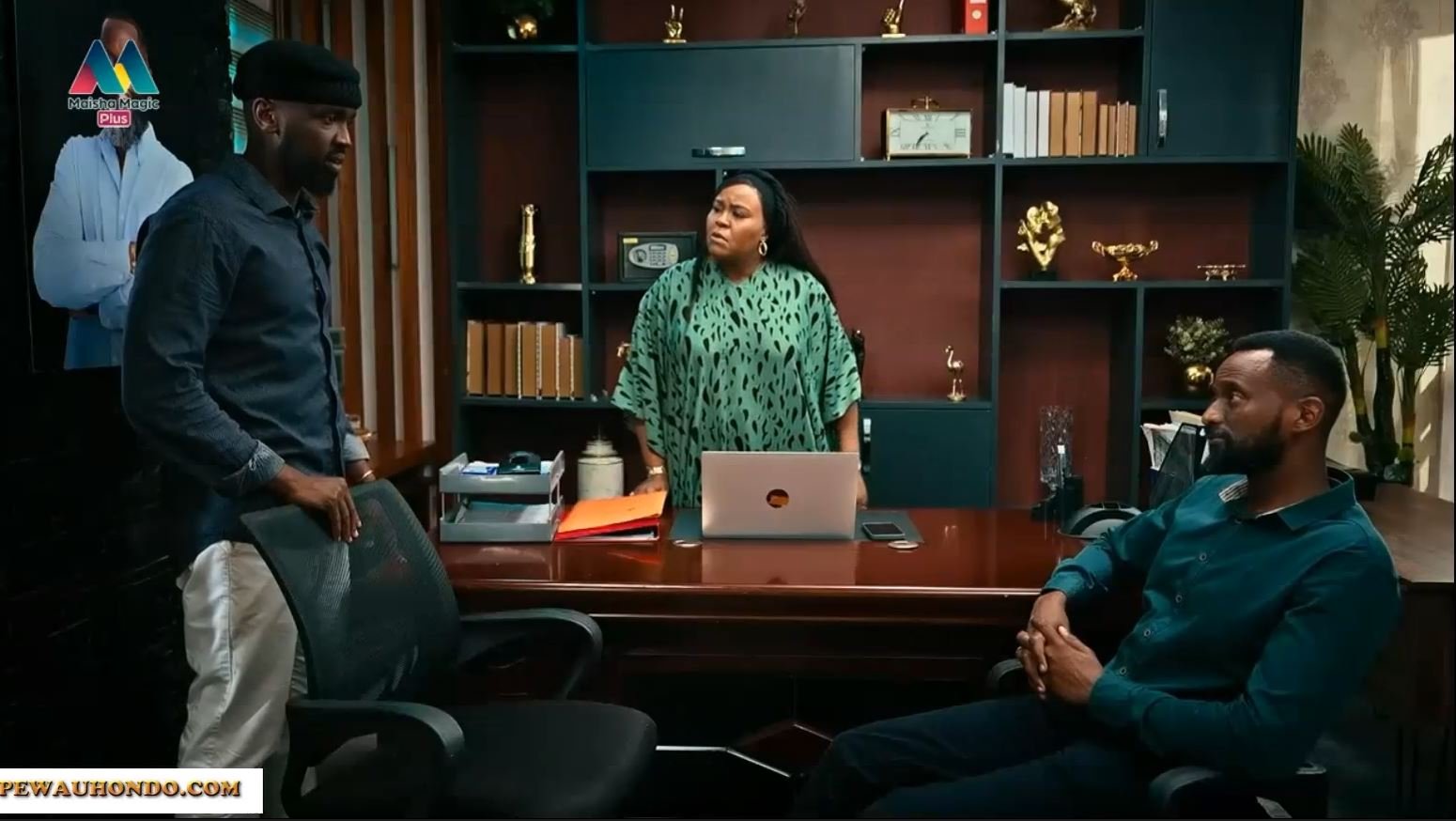Why the Sony ZV-E10 is a Top Choice for Vloggers and Content Creators in 2025
The Sony ZV-E10 is a standout mirrorless camera tailored for vloggers and content creators, offering a compelling blend of portability, advanced video features, and affordability. Launched in August 2021, it remains a strong contender in 2025 for those stepping up from smartphones or compact cameras to a more professional setup. This article explores why the Sony ZV-E10 is ideal for vloggers and content creators, its key selling points, competitors, target audience, drawbacks, and its cost in Kenyan shillings.
Why the Sony ZV-E10 is Great for Vloggers and Content Creators
The Sony ZV-E10 is designed with content creation in mind, particularly for vloggers, YouTubers, and social media influencers who prioritize video quality and ease of use. Its compact design, creator-focused features, and compatibility with Sony’s E-mount lenses make it a versatile tool for producing high-quality content. Here’s why it shines:
Key Selling Points
- APS-C Sensor for Superior Image Quality
The ZV-E10 features a 24.2-megapixel APS-C CMOS sensor, which delivers significantly better image quality than smartphone cameras or smaller 1-inch sensor compacts like the Sony ZV-1. The larger sensor provides excellent low-light performance, dynamic range, and the ability to create a shallow depth of field for that professional, cinematic look. For vloggers, this means crisp, vibrant footage that stands out on platforms like YouTube, Instagram, and TikTok. - Advanced Autofocus with Real-Time Eye AF
Sony’s industry-leading autofocus system, with 425 phase-detection and 425 contrast-detection points covering 84% of the frame, ensures subjects stay sharp even during fast movement. The Real-Time Eye AF tracks human and animal eyes, making it ideal for solo vloggers who need reliable focus while moving or talking to the camera. The Product Showcase mode is a game-changer for creators reviewing products, as it seamlessly shifts focus to objects held up to the lens. - Vlogger-Friendly Features
- Fully Articulating Touchscreen: The 3-inch vari-angle LCD screen flips out and rotates, allowing vloggers to frame themselves easily during selfie-style recording.
- Background Defocus Button: A one-touch bokeh switch creates a blurred background, mimicking the cinematic look of high-end cameras without complex settings.
- Directional 3-Capsule Microphone: The built-in mic with included windscreen delivers clear audio, reducing background noise and enhancing voice isolation. The windscreen is particularly useful for outdoor shooting.
- Product Showcase Setting: Automatically prioritizes focus on objects, perfect for unboxing videos or product demos.
- Slow & Quick (S&Q) Mode: Supports slow-motion recording at 1080p up to 120fps (100fps in PAL), adding creative flair to vlogs.
- Interchangeable Lenses for Versatility
Unlike fixed-lens cameras like the Sony ZV-1 or ZV-1F, the ZV-E10 uses Sony’s E-mount system, allowing creators to swap lenses for different looks. The kit lens (16-50mm f/3.5-5.6) is compact and versatile, while options like the Sigma 16mm f/1.4 prime offer superior low-light performance and shallow depth of field. This flexibility makes the ZV-E10 suitable for various content styles, from travel vlogs to studio setups. - Compact and Lightweight Design
Weighing just 343g (body only), the ZV-E10 is easy to carry for on-the-go vlogging. Its compact size makes it a practical choice for creators who film in diverse environments, from city streets to outdoor adventures. - 4K Video and Connectivity
The ZV-E10 records 4K video at up to 30p (oversampled from 6K for sharper footage) and 1080p at up to 120fps for slow-motion. It supports Wi-Fi and Bluetooth for seamless file transfers to smartphones or laptops via Sony’s Imaging Edge Mobile app, making it easy to edit and share content quickly. The camera also doubles as a high-quality webcam for livestreaming. - Affordable Price Point
At approximately KES 100,000–110,000 for the body only or KES 115,000–125,000 with the 16-50mm kit lens in Kenya (based on 2025 retail prices and exchange rates), the ZV-E10 offers professional-grade features at a budget-friendly price compared to full-frame alternatives like the Sony ZV-E1.
Competitors
The Sony ZV-E10 faces stiff competition in the vlogging camera market. Here are its main rivals:
- Canon EOS R50
- Price: ~KES 110,000–120,000 (body only)
- Pros: Features a 24.2MP APS-C sensor, 4K 30p video with no crop, and an electronic viewfinder (EVF), which the ZV-E10 lacks. Its autofocus is reliable, and it’s highly portable.
- Cons: Fewer video-specific features like Product Showcase mode, and Canon’s RF-mount lens ecosystem is less extensive than Sony’s E-mount.
- Best for: Vloggers who want an EVF and prefer Canon’s color science.
- DJI Osmo Pocket 3
- Price: ~KES 80,000–90,000 (Creator Combo)
- Pros: Ultra-compact with a 1-inch sensor, built-in gimbal for superior stabilization, and a swiveling touchscreen for vertical/horizontal video. Ideal for solo vloggers due to its face-tracking follow modes.
- Cons: Fixed lens limits versatility, and it’s less suited for stills photography.
- Best for: Creators prioritizing portability and gimbal-like stabilization.
- Fujifilm X-S20
- Price: ~KES 160,000–180,000 (with kit lens)
- Pros: Offers 6K video, in-body image stabilization (IBIS), and a 26.1MP APS-C sensor. Its film simulation modes provide unique color profiles for creative vlogging.
- Cons: More expensive and slightly bulkier than the ZV-E10.
- Best for: Hybrid shooters who value both video and stills.
- Sony ZV-1 II
- Price: ~KES 90,000–100,000
- Pros: Compact with a fixed 18-50mm lens, excellent autofocus, and a 1-inch sensor. Ideal for grab-and-go vlogging.
- Cons: Smaller sensor than the ZV-E10, no interchangeable lenses, and limited video capabilities (4K 30p, no 10-bit recording).
- Best for: Beginners who want a point-and-shoot experience.
Who the Sony ZV-E10 is Best For
The Sony ZV-E10 is ideal for:
- Entry-Level Vloggers and Content Creators: Those upgrading from smartphones or compact cameras will appreciate its ease of use, professional video quality, and affordable price.
- YouTubers and Social Media Influencers: Its vlogger-centric features like Product Showcase, Background Defocus, and reliable autofocus make it perfect for creating polished content for YouTube, TikTok, or Instagram.
- Travel Vloggers: Its lightweight design and lens versatility suit creators filming on the go.
- Hybrid Shooters: While optimized for video, the ZV-E10’s 24.2MP sensor and 11fps burst mode make it capable for casual stills photography, especially with high-quality E-mount lenses.
Drawbacks of the Sony ZV-E10
While the ZV-E10 is a fantastic camera, it has some limitations:
- No In-Body Image Stabilization (IBIS): Unlike the Sony ZV-E1 or Fujifilm X-S20, the ZV-E10 relies on lens-based Optical SteadyShot or digital Active Mode, which crops the frame by 10–20%. This can result in less stable footage for handheld shooting.
- No Electronic Viewfinder (EVF): The lack of an EVF can be a drawback in bright sunlight, where the LCD screen may be hard to see. This is less of an issue for vloggers used to smartphone screens but may frustrate traditional photographers.
- Limited Battery Life: The NP-FW50 battery lasts for about 440 shots or 80 minutes of 4K recording. Creators shooting long sessions will need spare batteries.
- 4K 30p Limitation: The ZV-E10 is capped at 4K 30p, and 4K 60p is not available (unlike the ZV-E10 II). This may disappoint creators needing smoother slow-motion footage.
- No Headphone Jack: While it has a microphone input, the lack of a headphone jack makes it harder to monitor audio levels in real time, which could be a dealbreaker for advanced users.
- Plastic Build: The lightweight plastic body feels less premium than higher-end models like the Sony ZV-E1, though it’s durable enough for casual use.
Cost in Kenyan Shillings
As of 2025, the Sony ZV-E10’s retail price in Kenya varies based on the retailer and bundle:
- Body Only: Approximately KES 100,000–110,000
- With 16-50mm Kit Lens: Approximately KES 115,000–125,000
These prices are based on global pricing trends (e.g., $700–$800 USD for the body, $800–$900 USD with the kit lens) converted at an exchange rate of roughly KES 130–140 per USD, factoring in local taxes and import duties. Prices may vary depending on promotions or retailers like Amazon, Sony Electronics, or local stores in Nairobi.
Conclusion
The Sony ZV-E10 is a stellar choice for vloggers and content creators in 2025, offering a powerful APS-C sensor, industry-leading autofocus, and creator-friendly features like Product Showcase and Background Defocus at an accessible price point of KES 100,000–125,000. Its interchangeable lens system and compact design make it versatile for various content creation needs, from travel vlogs to product reviews. While it lacks IBIS, an EVF, and a headphone jack, its strengths far outweigh these drawbacks for entry-level to intermediate creators.
Compared to competitors like the Canon EOS R50, DJI Osmo Pocket 3, Fujifilm X-S20, and Sony ZV-1 II, the ZV-E10 strikes an excellent balance of affordability, video quality, and lens flexibility. It’s best suited for aspiring vloggers, YouTubers, and influencers in Kenya looking to elevate their content without breaking the bank. For those needing more advanced features, the Sony ZV-E10 II or ZV-E1 may be worth considering, though at a higher cost.
Whether you’re filming a travel vlog in Nairobi or creating product reviews for YouTube, the Sony ZV-E10 is a reliable, budget-friendly tool that delivers professional results.
LULU MAISHA MAGIC PLUS SEASON 1 EPISODE 90 FRIDAY SEPTEMBER 5TH 2025 FULL EPISODE










You must be logged in to post a comment.